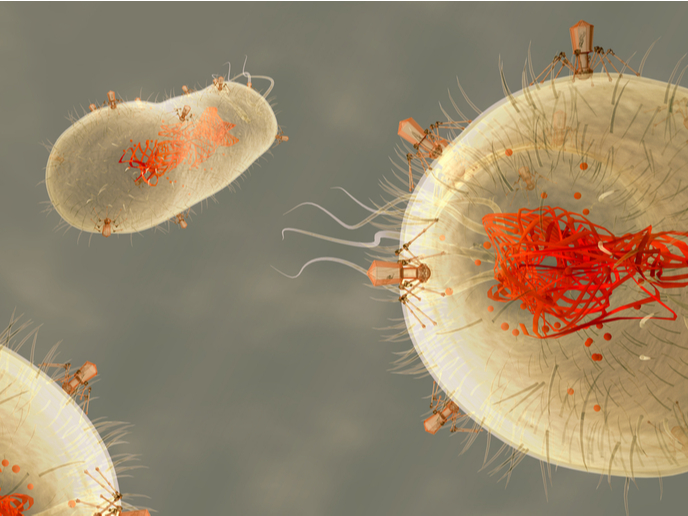Engineering patterns in bacteria
Elucidating cellular gene regulatory networks (GRNs) is a complex endeavour. GRNs are naturally occurring information-processing modules that control developmental processes. To understand pattern formation in higher eukaryotes, knowing how genetic information is translated to induce cell differentiation and produce specific spatial designs is essential. It is known that producing specific colours is dependent on morphogen concentrations where morphogen is a signalling molecule. For instance, high, middle or low concentrations of morphogen correspondingly activate a blue, white or red gene stripe. Researchers of the 'Synthetic gene regulatory networks for single-stripe gene expression' (SYNTHSTRIPE) project synthesised GRNs to engineer stripes and elucidate GRN properties and function. In the past, researchers constructed gene circuits with predefined behaviours on a case-by-case basis. To develop three-node GRNs, project members combined modelling with experimental data on messenger RNA concentration profiles for each gene to elucidate their function. They successfully went beyond the state of the art and designed synthetic stripe-forming gene networks. More specifically, they developed a flexible network scaffold prototype with the capability to build different network topologies. In this instance, four incoherent feed-forward loop networks for stripe-forming were constructed. Scientists used RNA polymerases from the T7 and SP6 phages as activators and selected bacterial transcription factors as repressors. Besides controlling stripe formation in these synthetic GRNs, researchers also successfully engineered an anti-stripe. Project outcomes demonstrated that developing a unified network design space after comprehensively exploring genotype-phenotype maps is more flexible and powerful than a case-basis GRN. This synthetic biology approach could shed light on several to-date unanswered mysteries of our genome. The knowledge engendered should have wide-ranging applications ranging from biotechnology to environment protection to biomedicine.







